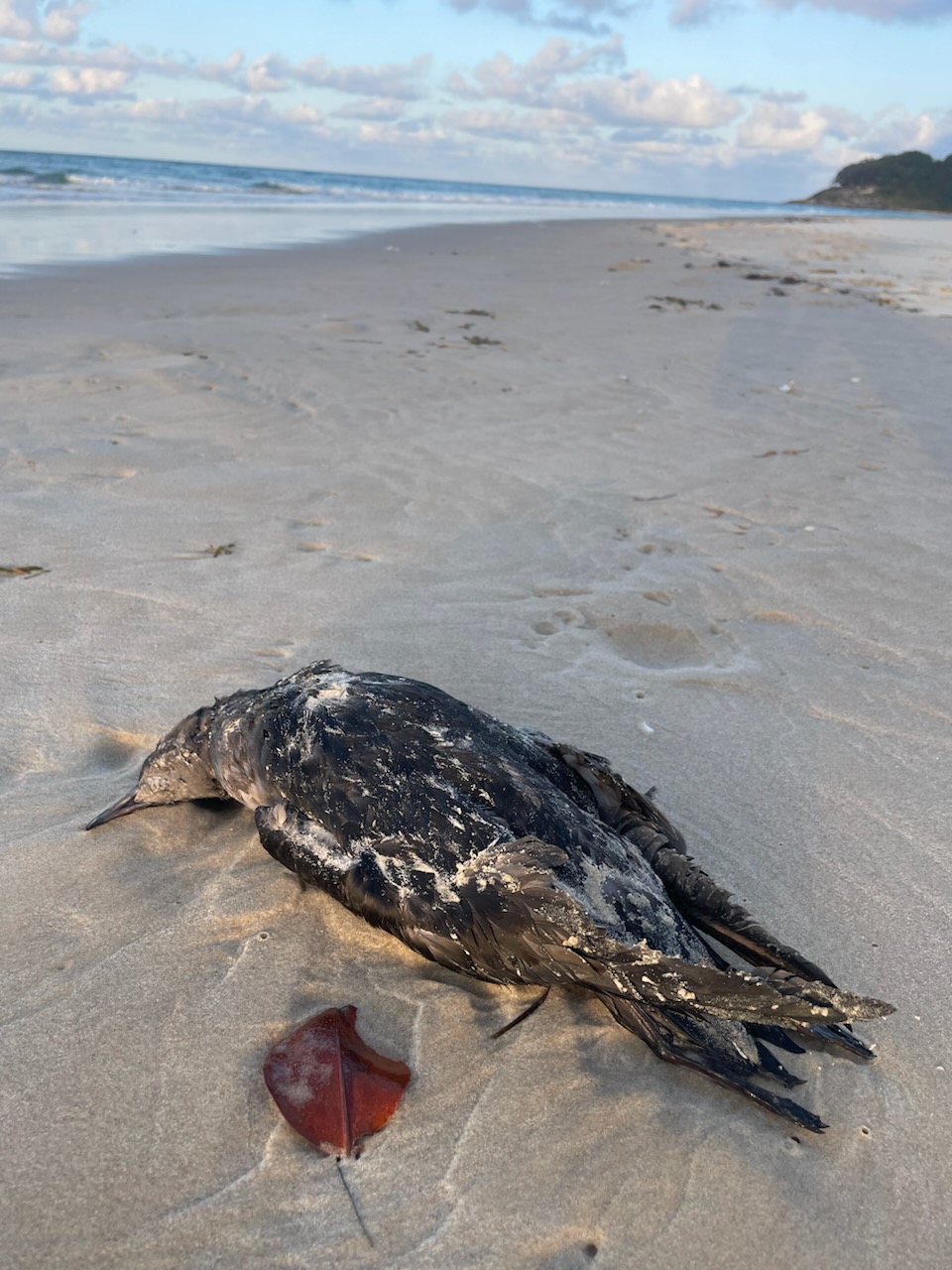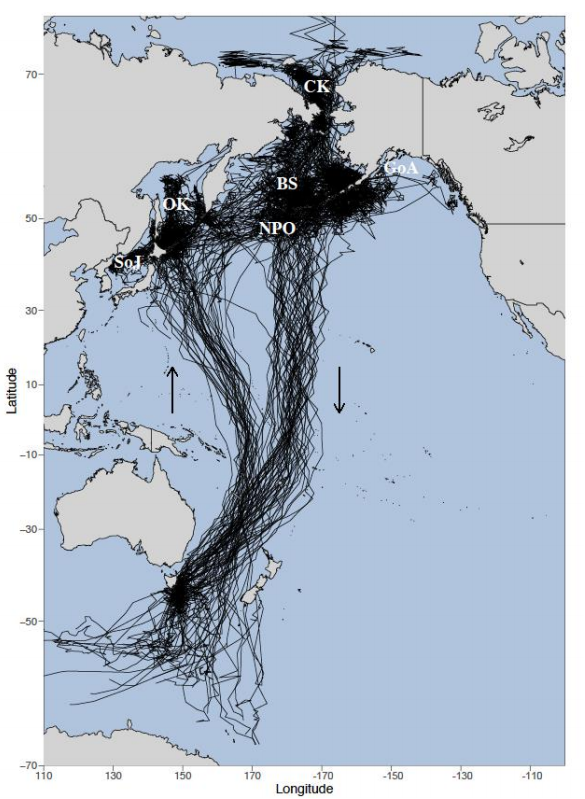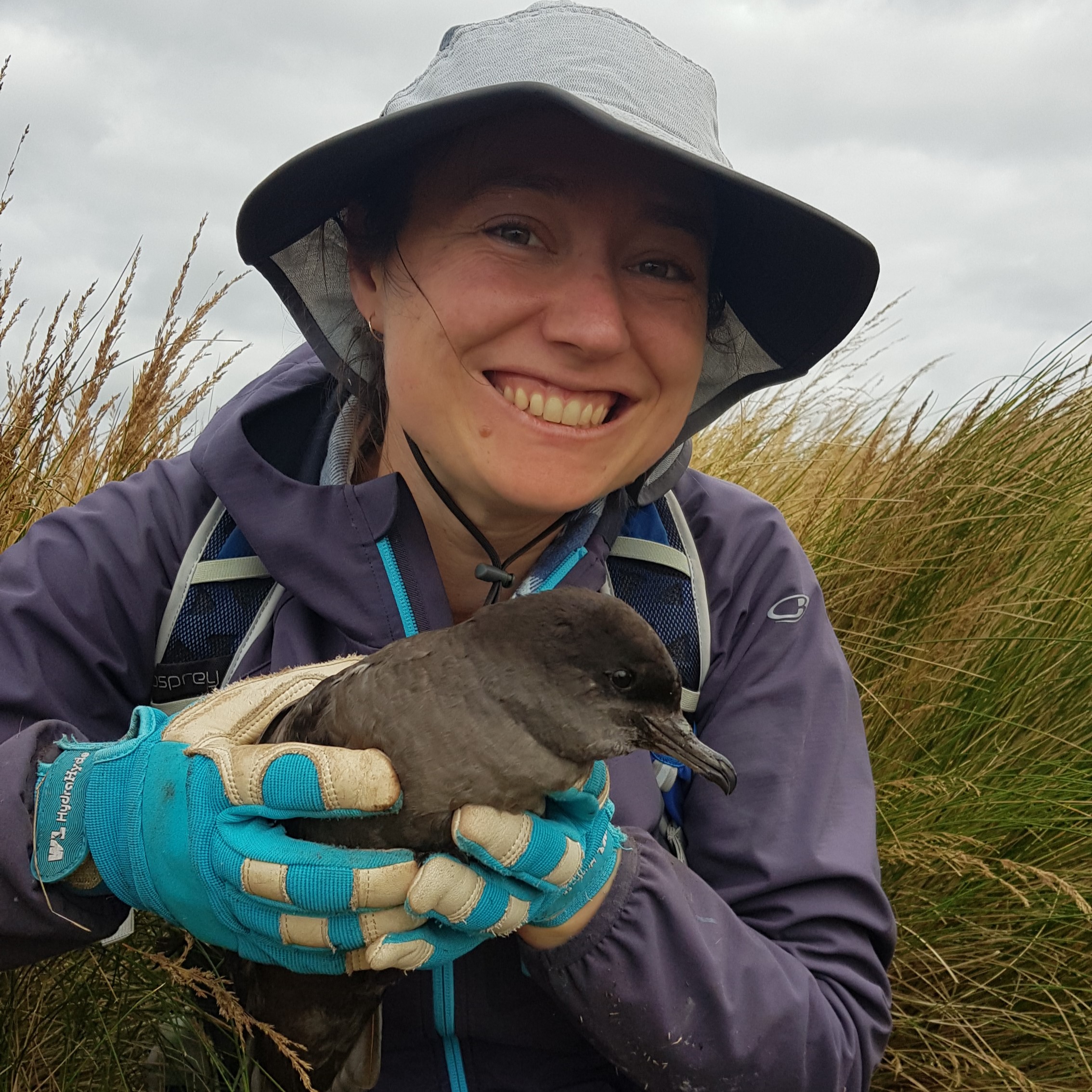Each year between September and November, many millions of shearwaters return from the northern hemisphere to their breeding islands in Southern Australia – but not all will survive this epic migration. Each year, beachgoers will find shearwater carcasses along east Australia's beaches and, in some years, there will be distressing mass mortalities called a seabird ‘wreck’. Seabird ecologist, Dr Lauren Roman from the University of Tasmania’s Institute for Marine and Antarctic Studies (IMAS), explains what we know and have yet to learn about this annual mortality.
Remarkable migrating seabirds
Short-tailed shearwaters Ardenna tenuirostris, also called yula or the Tasmanian muttonbird, are a culturally-significant species and Australia's most abundant seabird – and IMAS researchers have had the privilege of studying this remarkable seabird for decades.
Short-tailed shearwaters breed on islands in Southern Australia, with most of the population breeding on islands in Bass Strait during summer and autumn. As things cool down in Australia, they take off on a journey of over 15,000 kilometres to the Northern Hemisphere where the sub-Arctic summer brings a buffet of marine prey for the shearwaters.
With the return of spring in Australia, an estimated 20 million or more shearwaters begin their epic migration back to their breeding islands, via the Tasman Sea. Some pass close to the southeast Queensland, NSW and Victorian coastlines, where huge flocks of thousands of birds can be seen streaming past.
Mortality during migration

Unfortunately, not all shearwaters survive this migration. Each year carcasses can be found on east Australia's beaches, especially towards the end of the migration from mid-October to mid-November. In some years, hundreds and even thousands of carcasses can be found on our east Australian beaches.
Mass mortalities are called seabird ‘wrecks’ but distinguishing between a 'normal' and 'mass' mortality can be tricky, because there's still a lot we don't know about the migration and ecology of this species. This means that, if even half of a percent (0.5%) of the population dies during migration, more than 100,000 carcasses will be cast adrift and some may wash up along our coastlines.
Short-tailed shearwaters can vary their migration pathways to Australia from year to year, and their proximity to the coastline and weather conditions can affect whether mortality events will be detected.

For example, if the returning birds are far out to sea, we may miss large mortality events. If they pass close to shore, and there are strong or onshore winds, normal levels of mortality may be mistaken for mass mortality.
But what causes mortality during migration? Many factors leading to mortality events and mass mortalities remain unknown, and are likely to be different from year to year.
What we do know is that these individuals are in very poor shape when they wash up, typically weighing only half of their healthy body mass. We also know that the factors that lead to mortalities on Australian beaches likely begin before the birds depart the Northern Hemisphere.
Understanding seabird survival challenges
IMAS researchers are working to better understand the ecology of the yula/short-tailed shearwater, including these mortality events during migration.
Better baseline information can help us understand and manage the threats to this species, so our researchers are currently involved in a number of projects to help build this knowledge, including:
- developing up to date estimates of population trends for key short-tailed shearwater populations, which were estimated at over 20 million in the 1990s

- conducting ongoing tracking/biologging to collect data on their foraging behaviour, ecology and threats
- using cutting-edge genomic tools to understand the age structure of shearwater populations, how connected different populations are, and their genetic resilience including to climate change
- gathering baseline information on seabird diseases affecting shearwater populations.
Found a beached shearwater? Here’s how to help
If you come across shearwaters on the beach during spring, do not to touch dead or live birds, and please do not let your animals such as dogs interact with them. Not only is this stressful for the bird, but there is a small (but still possible) risk of zoonotic disease that migrating birds can bring from other parts of the world.
This could include the high pathogenicity avian influenza (HPAI) H5N1, which has not currently been detected in Australia, but presents a serious threat to our wildlife and agriculture. Pathogenicity is the technical term for the ability of an organism to cause disease and harm the host, so in this case the avian flu virus is highly likely to harm and cause fatalities in infected seabirds.
Helping a sick and dying seabird may be our first instinct, but migrating birds can bring diseases like avian flu from other parts of the world. Please report them to your local government’s marine authority or specialist seabird rescue group.
If you encounter more than a few birds on a stretch of beach, we recommend noting the time, date, location and how many birds you see along one kilometre of beach. You can then report the mortality to your state government environment department, following their marine animal stranding procedures in Queensland, NSW and Tasmania, or Wildlife Victoria.
If live shearwaters in distress are encountered, please contact your local specialist seabird rehabilitation and rescue network or wildlife veterinary hospital network for advice.
Specialist wildlife carers can make an informed decision about whether to attend and if they choose to, are equipped with the necessary PPE and handling equipment.
Wildlife hospitals and specialist carers are best placed to make a decision about the animal’s welfare, and are often connected with wildlife veterinary networks, such as Wildlife Health Australia, that can further investigate whether infectious diseases and other biosecurity threats may be present.
Discover more about seabird wrecks in Dr Roman’s 2023 Conversation article: Why are dead and dying seabirds washing up on our beaches in their hundreds?
*Shearwater flight path graphic source: Hierarchical foraging strategies of migratory short-tailed shearwaters during the non-breeding stage
Cover image: Shearwaters in
flight. Credit: Lauren Roman


